Back To Blogs / Blogs / Sep 2022
Oudong - A page out of history
Cambodia is a land of verdant forests and ancient temples. A centuries-old city in this spectacular country is one that champions both time-worn nature and architecture. The place we are referring to is the time-honored city of Oudong.
Also spelled as Odong or Udong, it was prominently constructed between 1618 C.E and 1863 C.E in the post-Angkorian period. Although Phnom Penh is the current day capital of Cambodia, until 1866, for a period of more than 250 years, Oudong was the capital of the country.
The city is located in the Kandal Province of Cambodia, specifically in the Phsar Daek Commune in the Ponhea Lueu District. It is located 33km from the current capital, Phnom Penh, and is visited during Pandaw's Classic Mekong expeditions and Phnom Penh to Siem Reap short cruises.
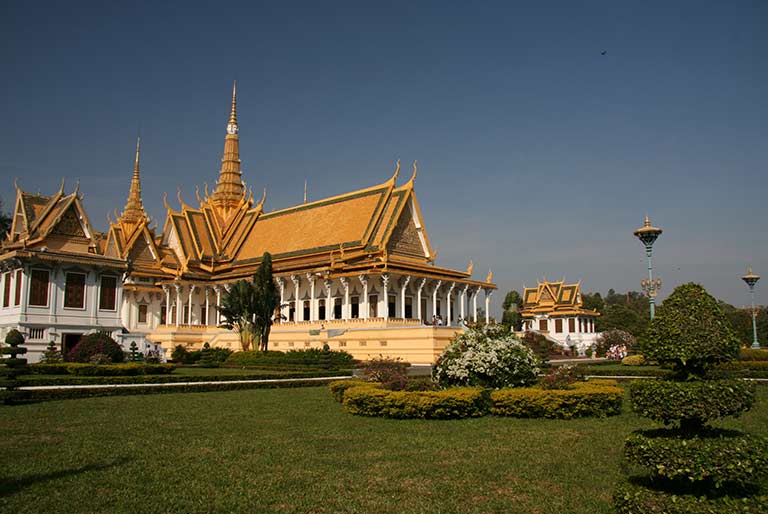
Phnom Penh
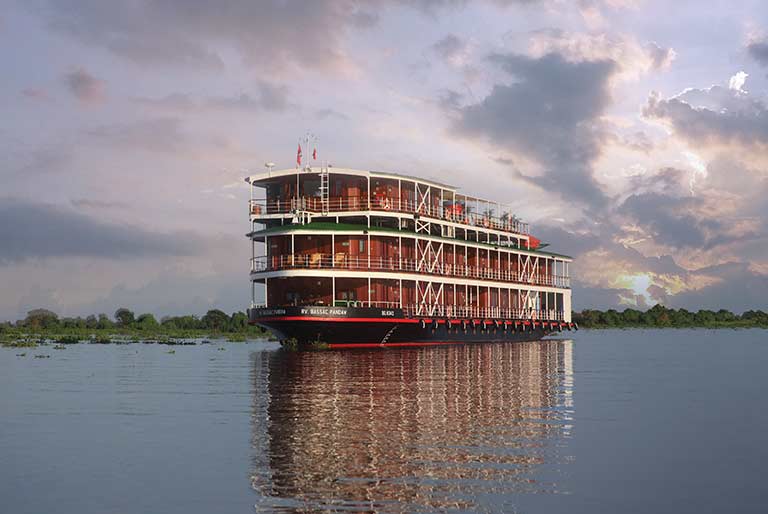
RV Bassac Pandaw
The city of Oudong looks like it's been plucked right from the pages of a history book. There are large and lush trees and plantations here. Plus, you can spot the royal necropolis, holding the remains of ancient Cambodian rulers on the largest hill against which the city stands – the Phnom Preah Reach Throap.
The chedis (i.e., stupas) on these hills are intricately carved and beautifully spiraled structures, making them a sight for sore eyes. Many of these chedis belong to the era decades before the city was founded. While quite a few were destroyed during the Khmer Rouge regime, a few still proudly stand, displaying Cambodia's rich heritage. The vibe here is very rustic, serene, and sacred.
The city was actually founded by King Srei Soryapor in the year 1601. Prior to that, the city was called Longvek and it was this Medieval city that European traders were most familiar with during the early days of trade between the West and the East. In the year 1618, it was officially named Oudong Meanchey. The word "Oudong" actually refers to a Sanskrit word called "Uttunga", which means "victorious/supreme". This indicates Oudong's – and by extension Cambodia's – place in ancient India and Indian culture.
A few centuries after its founding, in 1841, the city was further developed and modernized by King Ang Duong. The period between 1841 and 1866 was one of the most promising times for Oudong. It was in 1866 that the city was abandoned by a monarch for the second time, this time by King Norodom, who moved his royal court to Phom Phem. The move wasn't a choice for King Norodom, but rather a political requirement as a result of the French hegemony over Cambodia at that time.
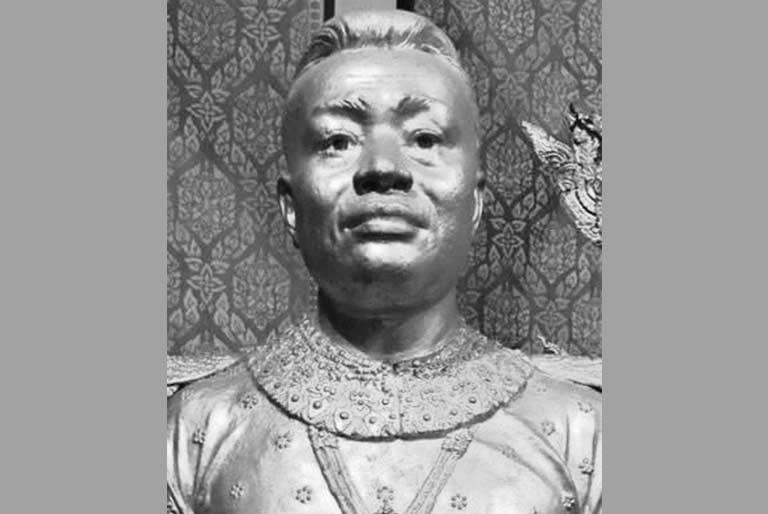
Bust of King Ang Duong
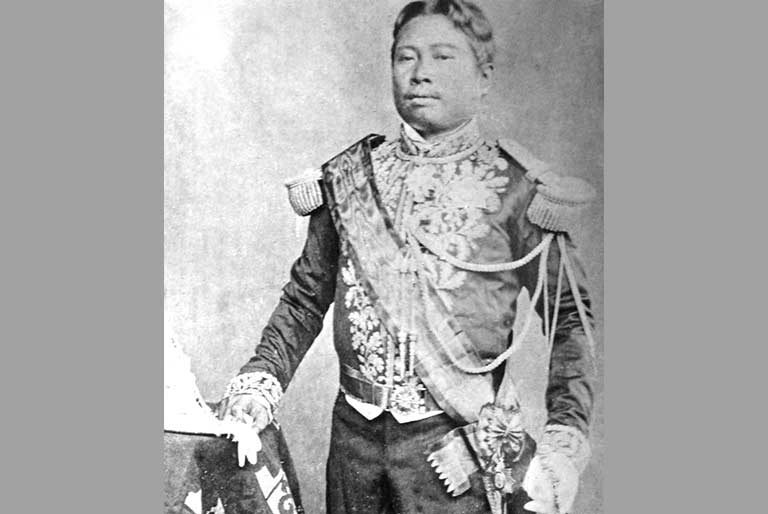
King Norodom
Ancient treasure, a mythic snake, and the iconic Arthaross temple
We know that the main hill against which the city of Oudong was founded, was called Phnom Preah Reach Throap. When translated, it refers to "Hill of the Royal Fortune". This name was given to the hill by the Khmers because of a legend surrounding the hills of Oudong.
According to the legend, Cambodia's entire fortune over the centuries was supposed to have been hidden in some of the caves dotting the Phnom Preah Reach Throap. The caves in question were believed to be located right under the famous Arthaross Temple, which was built here in the initial years of the founding of Oudong. The temple is called Arthaross because it has 18 distinct corners/points.
Whether the Khmers found the ancient treasure hidden underground beneath the Arthaross Temple after its razing, is unclear. But it is clear that the Khmer Rouge regime became exceedingly rich and powerful during their rule of Cambodia.
This temple was destroyed by the Khmers when they first invaded the region, in pursuit of prosperity and power. Much later, the Khmers re-built the Arthaross Temple, which houses some of the relics (such as the gigantic statue of Buddha and other remains) of its predecessor. The reason for building a temple they had destroyed has yet another local legend attached to it.
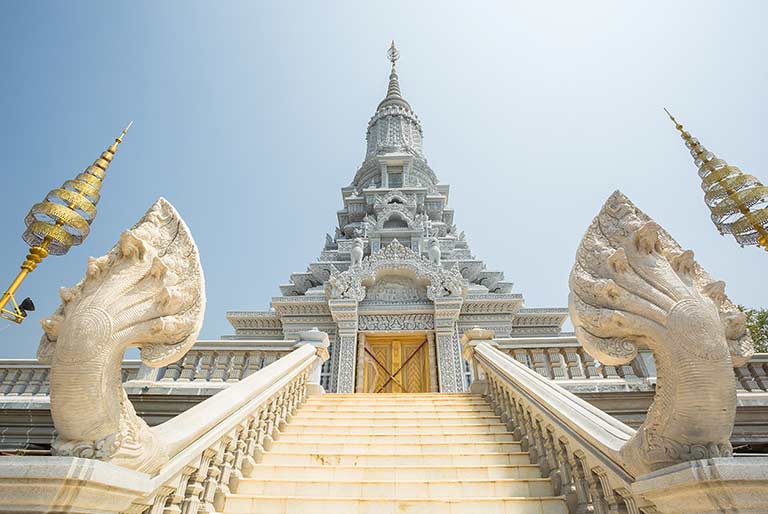
Arthaross Temple
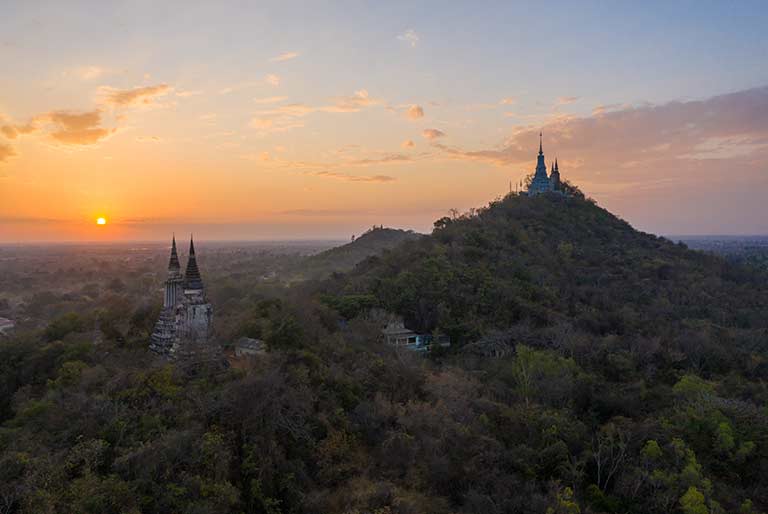
Phnom Preah Reach Throap
The story goes that in the early 18th Century, a Chinese emperor sent out his troops across Asia to find opportunities for political alliances and opposition. During one such trip to Cambodia, he was informed about the wealth, power, and success of the Khmers in Oudong. The troops had noticed a large mountain in the shape of a Naga (a mythic celestial snake in Hindu & Buddhist mythology). At the top of the Naga-shaped mountain, they saw the remains of a massive temple (the original Arthaross) with a deep cavern underneath the remains. Surrounding the summit was the much-reputed Khmer city.
So impressive and frightening was the Khmer kingdom against this ethereal natural backdrop, that the Chinese troops sent their emperor a warning. They said that if the Naga were to come out from within this mountain and attack, it could give the Khmers the strength to rule the entire world. Afraid for the safety of his country, the Chinese emperor is believed to have sent a missive to the Khmers, requesting them to build a temple right on top of the open cavern, facing the direction where China lay. His belief was that the Naga would not attack China if the temple with the Buddha statue benevolently faced China. It is this reason why, when you visit the ancient and magnificent Arthaross temple, you'll notice that it was re-built differently compared to other Buddhist chedis. This temple faces North (towards China) instead of facing East like any other traditional Buddhist monument.
A serpentine city
One of the most interesting things about the story of the Arthaross temple legend is that the Naga reference also makes an appearance in the Khmers' opinion of the hilly landscape, centuries before the Chinese troop's arrival.
In fact, some research shows that the Khmers themselves believed that the land which was to one day become Oudong, resembled the Naga physically. Here, the Naga refers to the multi-headed celestial snake that is tasked with protecting the Buddha. The snake's multiple heads also symbolize the flowering of the Buddha's enlightenment. (Once again, the Naga is believed to be a variant of the Shesha Naga which is a celestial snake that protects and shades the Hindu god Vishnu).
The undulating mountain range with its many hills resembled, to them, the multi-headed Naga. There is also evidence for an ancient Cambodian myth, which states that the land where Oudong is today, was the birthplace of the Naga named "Mucilinda". It is this reason that you'll see how the streets of Oudong are serpentine in shape, spiraling out from the center, resembling how a long snake might be seated. The design and architecture of the city too celebrate the Naga, with many snake-themed embellishments and motifs decorating different parts of the city.
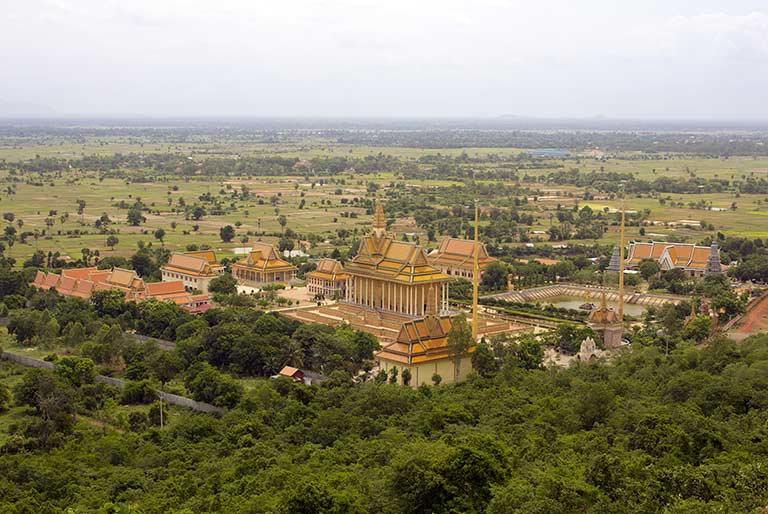
Buddhist Monastery
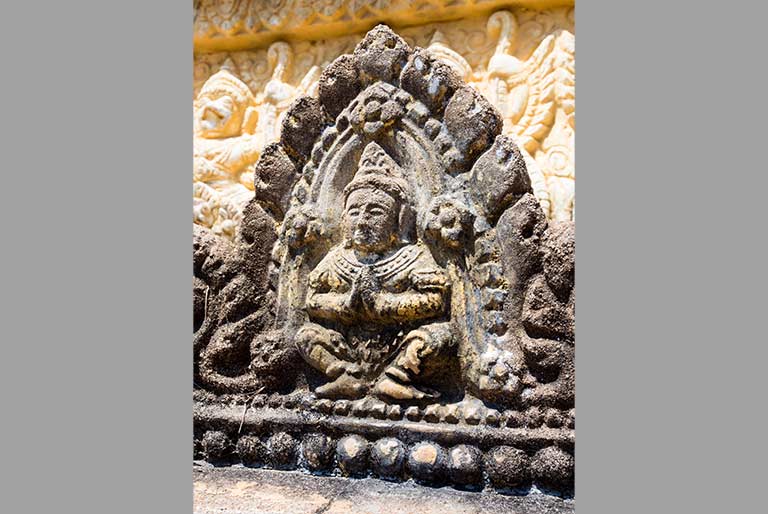
Naga Carving
The Naga symbolizes the duality of being protective & guarded and also generous and open. Many historians believe that it is this legend that birthed the legend of the caverns containing immense treasure (perhaps thanks to the Naga's generosity of spirit). Additionally, it could be why thousands of pilgrims from across Cambodia and southeast Asia make their way to Oudong, to seek the blessings of the Naga.
A deserted city that's full of life
Today, the ancient city of Oudong is sparsely populated. Apart from a handful of locals who stay here, most people are tourists and pilgrims. Yet, every street, every temple wall, and every tree in Oudong has a magnificent and age-old story to tell. It is to listen to these stories and to see history come alive before your eyes, that you must make a visit to this special place located in the lap of Cambodia.